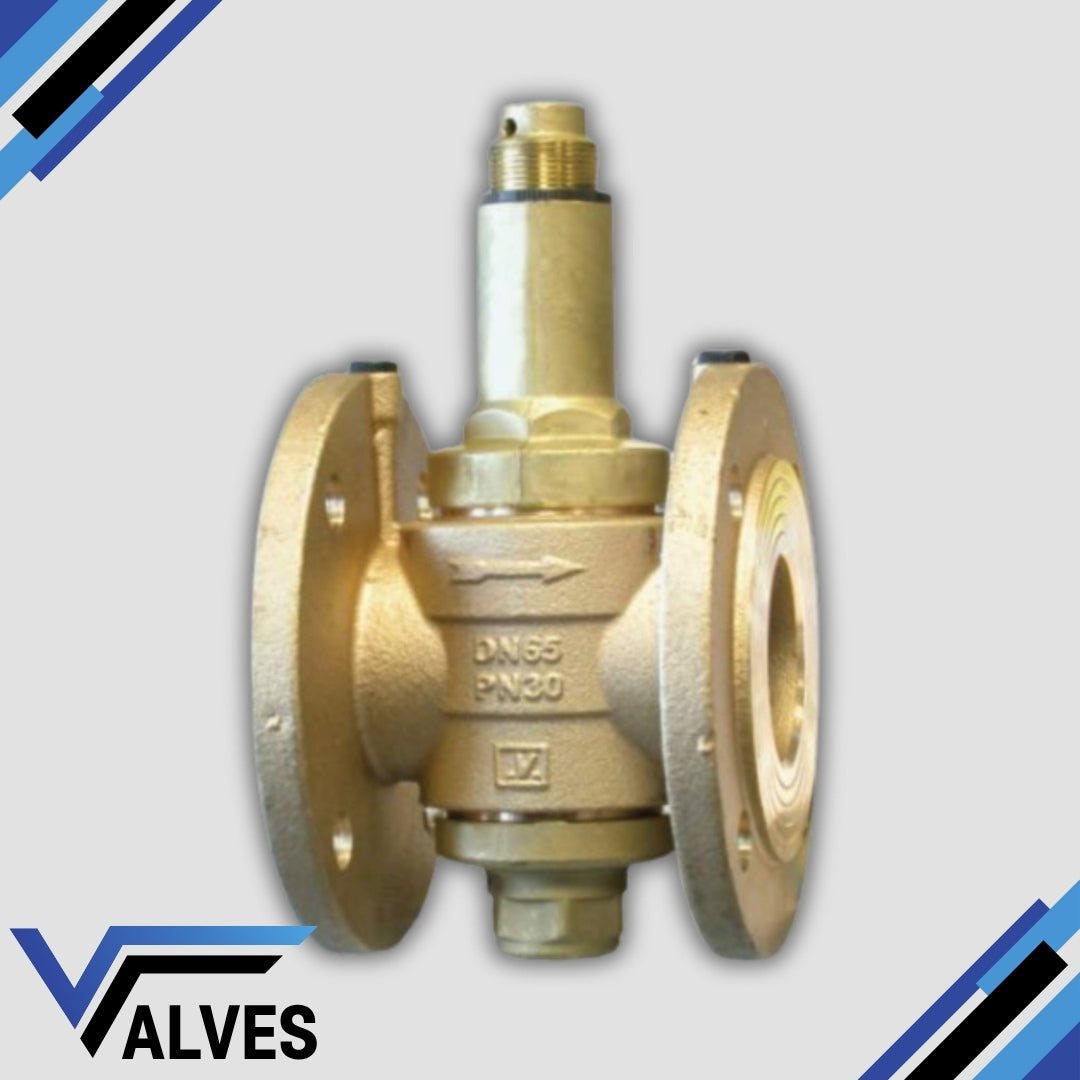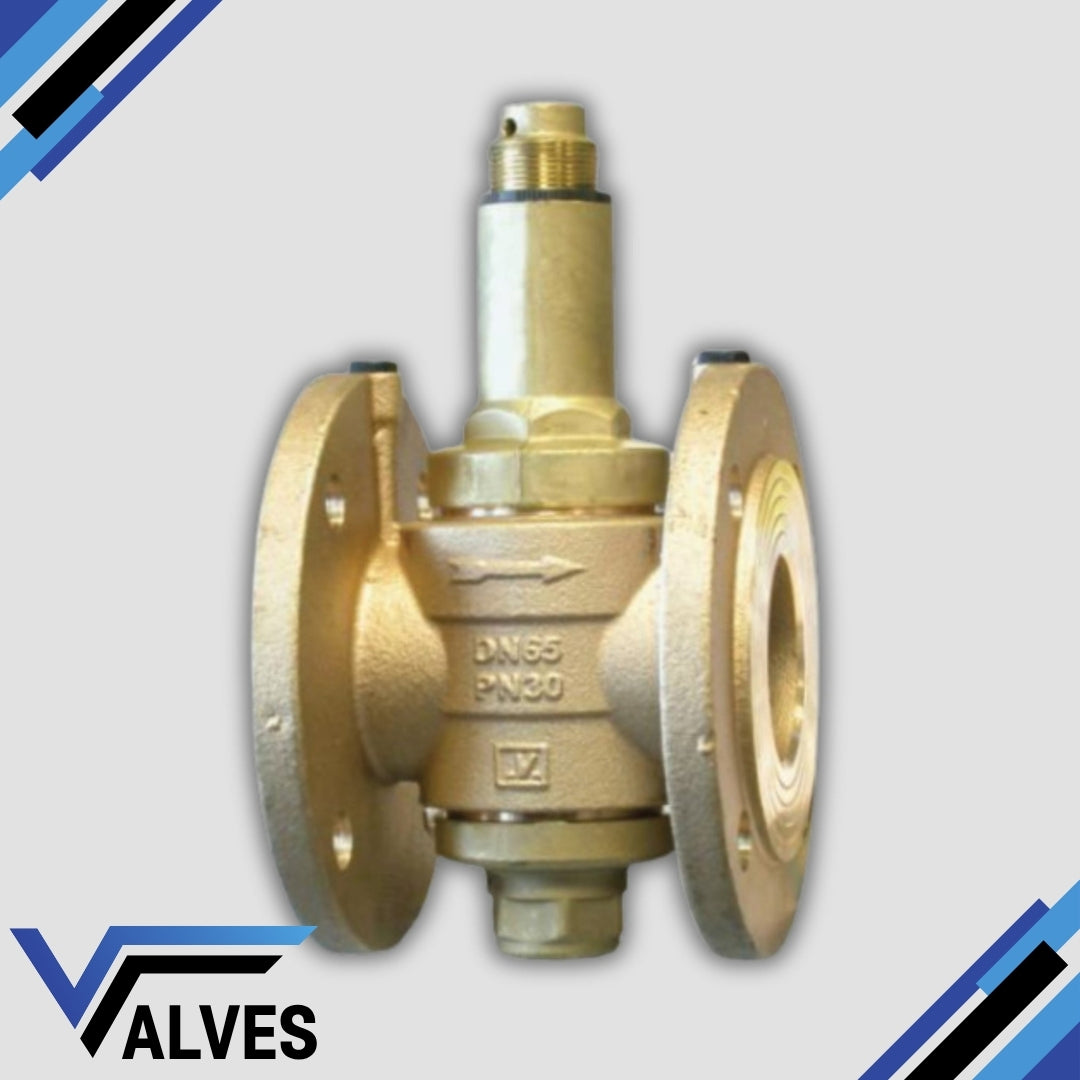Valves UK
Bronze Pressure Reducing Valve – Flanged PN16 – Direct Acting
Bronze Pressure Reducing Valve – Flanged PN16 – Direct Acting
Couldn't load pickup availability
The Bronze Pressure Reducing Valve – Flanged PN16 is a precision-engineered, direct acting valve designed to regulate and stabilise downstream water pressure in pipeline systems. Featuring a bronze body, brass diaphragm assembly, and stainless steel seat and bar, this valve offers exceptional reliability, corrosion resistance, and performance consistency in demanding environments.
With an adjustable outlet pressure range of 1 to 7 bar, it allows for fine control of system pressure, making it ideal for protecting downstream equipment and ensuring safe, efficient operation. A built-in ¼” gauge port enables accurate pressure monitoring, while PN16 flanged connections allow for easy installation in industrial and commercial systems. Rated for temperatures from -10°C to 80°C, this valve is a dependable solution for water service applications.
Key Features:
- Flanged PN16 for secure, standardised installation
- Direct acting design for fast response and pressure stability
- Bronze body with brass diaphragm and stainless steel seat & bar
- Adjustable outlet pressure from 1 to 7 bar
- ¼” gauge port for monitoring outlet pressure
- Temperature range: -10°C to 80°C
- Ideal for water supply, process lines, and pressure control systems
Share

FAQ's
What is the difference between a valve and an actuator?
What types of actuators are available?
The main types of actuators are:
Pneumatic actuators – use compressed air for fast, reliable operation.
Electric actuators – use electrical power for precise control.
Hydraulic actuators – use fluid pressure for high-torque applications.
Each type offers unique advantages depending on the environment, media, and system control needs.
How do I choose the right actuator for my valve?
To select the correct actuator, consider:
Valve type and torque requirement
Power source available (air, electric, or hydraulic)
Operating environment (temperature, humidity, hazardous area)
Control signal type (on/off or modulating)
Matching actuator torque and compatibility with the valve’s ISO mounting ensures reliable performance.
What are the main types of valves used in automation?
The most common valves in automated systems include:
Ball valves – for tight shutoff and quick operation.
Butterfly valves – for larger flow control with compact design.
Globe valves – for precise throttling and flow regulation.
Check valves – to prevent backflow.
Gate valves – for full bore flow isolation.
What’s the difference between a double-acting and spring-return actuator?
Double-acting actuators use air (or power) to both open and close the valve.
Spring-return actuators use air to open (or close) the valve, and a built-in spring to automatically return it to a safe position when power or air is lost — ideal for fail-safe operation.
How often should valves and actuators be serviced?
Regular maintenance intervals depend on operating conditions, but a good rule of thumb is to inspect every 6–12 months.
This includes checking for leaks, lubrication, seal wear, and actuator responsiveness to prevent unexpected downtime.

